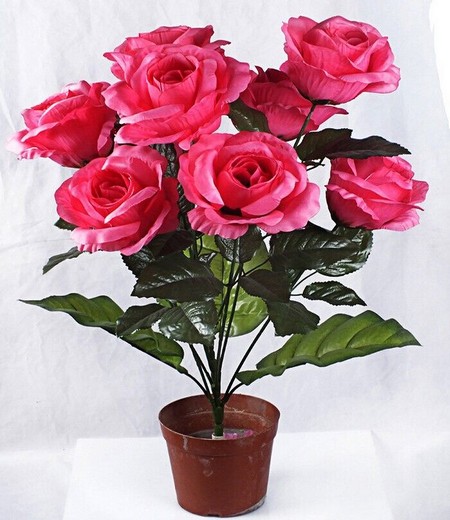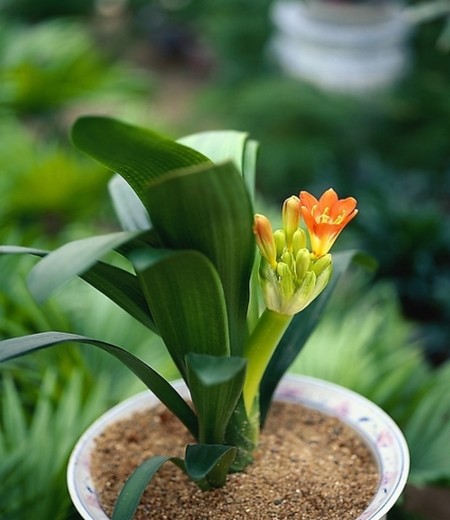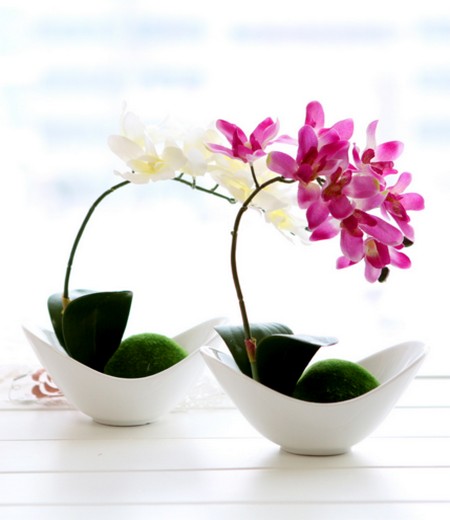Cultivation methods and precautions of potted roses
Everyone knows that roses are a symbol of love, so there are many people who plant roses. Rose words in ancient Greek mythology, the rose is a combination of love and beauty, which is not only the embodiment of the god of beauty, but also dissolved into the blood of the god of love. It can be said that roses are the universal language used to express love all over the world. Every Valentine's Day, roses are even more valuable, and they are pets between lovers and lovers. Roses represent love, but roses of different colors and blossoms have other auspicious meanings.

Roses are ideal flowers and trees for urban greening and gardens, suitable for flower hedges, and also materials for street and courtyard landscaping, flower beds and hundred gardens. Documents are trimmed and modeled, decorated with square meadows, embankments, flower ponds and planted flowers. Today we will take a look at how to plant roses.
Roses do not have high requirements for soil, only need to contain a certain humus aggregate structure of better culture soil, as long as the following three links can grow well:
Tools / raw materials:
Cling film, fertilizer, basin
Steps / methods:
1. Roses are drought-resistant and waterlogged plants, and xerophytes are almost all waterlogged plants. If they are potted plants, they should be cultivated in non-glazed clay pots and strictly adhere to the principle of "no drying, no watering, watering thoroughly". If you water roses frequently (especially taboo on rainy days with high humidity and low evaporation), the roots of roses will be soaked like pickles (which is essentially different from hydroponics) and die.
2. Plants cultivated indoors should not be placed in rooms with insufficient light for a long time, or they should be carried to sunny places regularly to replenish the light. Without photosynthesis, plants will stop producing nutrients necessary for growth, lose the physiological cycle of water and nutrients (light pumping), and produce yellow leaves, rotten leaves, rotten roots, and even death.
3. Any plant only likes light fertilization, and the application of heavy fertilizer (especially chemical fertilizer) will lead to local root rot and death, according to the size of the plant and the basin, apply 20-40 grains of compound fertilizer (or nitrogen fertilizer) evenly under 1 inch of soil near the basin every 1-1.5 months, or apply light water and fertilizer such as fully fermented rice panning water once or twice a month. As long as the green leaves and flowers grow well, there is no need to apply fertilizer.
4. with a sowing plate or basin, the medium used for sowing should be clean and free of diseases and insect pests and contain fertilizer. Wet the medium first after loading the medium. Sowing or sowing on demand can be used, but sowing on demand saves seeds. Each seed is sowed one by one, and the distance between seeds can be based on the width of a finger. After sowing, cover the clean medium slightly, the thickness of the cover should be no more than twice the thickness of the seed, and the small seed can not cover the medium.
5. After sowing, seal the surface of the basin with plastic film, and poke several holes in the plastic film, on the one hand, it can keep moisture, on the other hand, it can prevent the seeds from being affected by external forces. Finally, put the seeds in a cool and ventilated place and wait for them to germinate. When it is found that it has sprouted, the basin should be moved to a place with bright light, but should not be directly exposed to the sun. When the seedling height is top to the plastic film, the plastic film can be removed. When the seedlings grow two leaves, you can put them in a place where there is direct sunlight sooner or later, so as not to grow too much. At this time, you can also start fertilizing, using a quick-acting fertilizer with a three-factor ratio of 20-20-20, diluted 2000 times, once a week. When the seedlings have more than 5 leaves, they can be transplanted to other pots!
Note:
The growth habits of rose and rose are exactly the same, and the most common diseases and insect pests are mildew and aphids (other pests are less and easy to catch).
Roses have no strict requirements on the soil, in outdoor garden cultivation, as long as the choice of sunny, not low-lying stagnant water, not many trees around the place to plant, the soil contains a certain degree of humic old soil. Loosen the soil once a year before the beginning of spring (take advantage of the opportunity to apply 20-30 grams of compound fertilizer 200 centimeters from the root), often remove surrounding weeds, roses are very prone to aphids and some other leaf-eating pests, can be killed with general pesticides (several kinds of alternate use to prevent pest resistance).
Frequent rain leads to too much humidity in the air, and the leaves are easy to develop white mildew, which can be controlled by pesticides that specifically treat white mildew.
For the aphids infected by potted rose, cotton swabs can be dipped in more than 50 degrees of liquor for many times (aphids will fall into the basin soil to avoid) to kill (indoor should not use pesticides).
Time: 2019-06-01 Click:
- Prev

How to raise a gentleman orchid to blossom
How to raise a gentleman orchid to blossom? For this problem, it can be said that Cymbidium culture enthusiasts are very concerned about it. We raise magnolia not only to watch the leaves, but also to watch the flowers. So, how does the gentleman orchid blossom the most beautiful? in fact, it is also very simple, that is, in the daily maintenance.
- Next

How to raise potted Phalaenopsis
The butterfly orchid is graceful, and the flower is so named because it is shaped like a butterfly. It is widely planted all over the world. Phalaenopsis is a treasure of tropical orchids, which is deeply loved by gentle people. if you want to raise colorful Phalaenopsis, it is necessary to master the breeding methods and matters needing attention. Butterfly orchids are graceful and colorful.
Related
- Fuxing push coffee new agricultural production and marketing class: lack of small-scale processing plants
- Jujube rice field leisure farm deep ploughing Yilan for five years to create a space for organic food and play
- Nongyu Farm-A trial of organic papaya for brave women with advanced technology
- Four points for attention in the prevention and control of diseases and insect pests of edible fungi
- How to add nutrient solution to Edible Fungi
- Is there any good way to control edible fungus mites?
- Open Inoculation Technology of Edible Fungi
- Is there any clever way to use fertilizer for edible fungus in winter?
- What agents are used to kill the pathogens of edible fungi in the mushroom shed?
- Rapid drying of Edible Fungi

